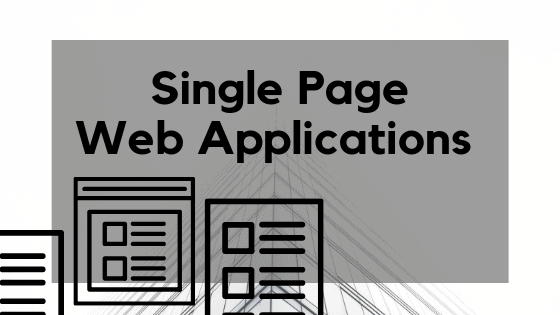#SPAs
Single page applications (SPAs) are becoming increasingly popular, and while they are not the right solution for every web application project, they hold some significant advantages over the multi-page approach. Let’s take a look at why you should consider this route.
Separation of Concerns + Performance
SPAs allow engineers to focus on a modular approach to software engineering that can allow rapid development speeds, and software that is easier to maintain. When leveraged properly, this should result in faster load times, which can be the difference between business success and failure in the world of software. Separation also proferrs the advantage of swifter development of new features, with easy ways to experiment with A/B testing, allowing further competitive advantage. Our engineers at Zartis find there is much more scope for the efficient re-use of code in SPAs, and overall maintainability is strengthened. Businesses can more easily create modules that can be utilised in other applications and products the company might create, allowing for significantly better ROI in development.
Easier Route to Mobile
It is also the case that SPAs offer an easier route to get to mobile devices. Creating a responsive website that works for mobile is much more straightforward with this approach, and can give businesses the capability to get their apps into the mobile world without having to the route of native applications in the first instance. This can help businesses keep costs under control in the critical early stages of getting an app to market.
The Rich SPA Ecosystem
The world of Javascript Frameworks has advanced greatly in recent years. React, Angular, Vue and others have created a rich ecosystem of open source libraries, tools and free knowledge that can help reduce costs and increase speed to market. These advances have also opened up opportunities for a coherent approach to UX, which leads us to…
Better UX
There is no hard and fast rule around this, saying that SPAs always have a richer UX than their multi-page applications, however it can be held that the opportunities for great UX are stronger in the former than the latter. SPAs can offer a gentle, linear experience for users, and this becomes particularly prevalent in mobile apps, where we have become accustomed to a scrolling-centric approach. It is also worth mentioning that SPAs tend to have better conversion rates than multi-page apps, though getting SEO to work properly on SPAs requires a bit more care.
Lower Infrastructure Costs + Offline Capabilities
Almost every software company in the world is trying to keep their AWS, Azure or GCP costs under control, so the business case for a well built SPA is compelling. SPAs can have a considerable advantage in curtailing these expenses, being more lightweight and less hungry than their multi-page counterparts. Also worth mentioning are the offline capabilities provided by SPAs, and capacity for caching in the browser. Removing the dependency on a stable internet connection and a need to call on backend services makes applications more robust and suitable for use in critical environments.
To Conclude
While we cannot have a one-size fits all approach in the world of software development, our engineers at Zartis often prefer the SPA approach for the reasons listed above. Feel free to reach out below in case you have any feedback or would like to learn more about collaborating with us in your
.


